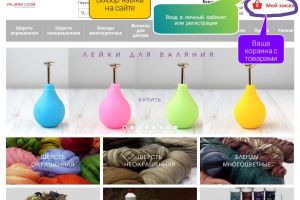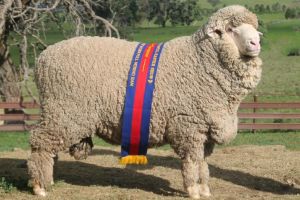Teeswater top - short and to the point
Teeswater is an English breed of sheep known for its long, shiny, and curly wool. Teeswater top is a popular material in crafting: for felting, spinning, doll hairstyles, decorative effects, and creating natural dreadlocks for trendy hairstyles.
Key Properties
- Fiber length: ≈150–300 mm - very long fibers that create a pronounced texture and beautiful curls.
- Thickness (micron): approximately 40–60 microns - thicker than super-soft merino, but suitable for decorative and outer items; often combined with finer fibers for clothing.
-Sheen and curls: a key characteristic - natural shine and attractive curly texture (ideal for striking accents, doll hair, beards, and decorative edges).
Use in Wet Felting
- Teeswater adds texture and volume: the top layer slides during wet processing, but the curls maintain a “wave” or “curl” effect, adding relief to the piece (effective techniques include using it as a top decorative layer or as inserts).
- Technique recommendation: in nuno-felting and delicate work, proceed carefully - allow the fibers time to “migrate” through the silk base, starting with gentle movements and gradually increasing felting intensity. This helps avoid fabric tears and preserves the sheen.
Use in Dry (Needle) Felting
- Teeswater is excellent for needle felting as a decorative element - especially for creating voluminous details, doll hair, beards, fur, and textured effects. Long curls are easily secured with a needle and create natural waviness.
Practical Tips for Crafters
1. Fiber type: available as ready-made “locks” (curly strands) and “tops” (combed/combined strips). Locks provide texture, while tops create a smooth base.
2. Before use: if the fiber or fleece is “greasy” (unwashed), it’s advisable to wash/pre-process it - this affects its behavior in wet felting. Some crafters use partially unwashed locks for a special effect, but this requires experience
3. Combining with other fibers*: for better adhesion in fine clothing, mix with merino or Bluefaced Leicester (for slip and grip), or use Teeswater as a top layer for decorative shine.
4. Gentle handling: in nuno-felting, work moderately (especially at the start) to avoid tearing silk or thin bases and to preserve the curls.
Care for Finished Items
- Hand wash with mild detergents, gentle squeezing, and dry flat. Teeswater retains its shine, but items with many long curls require careful handling.
















